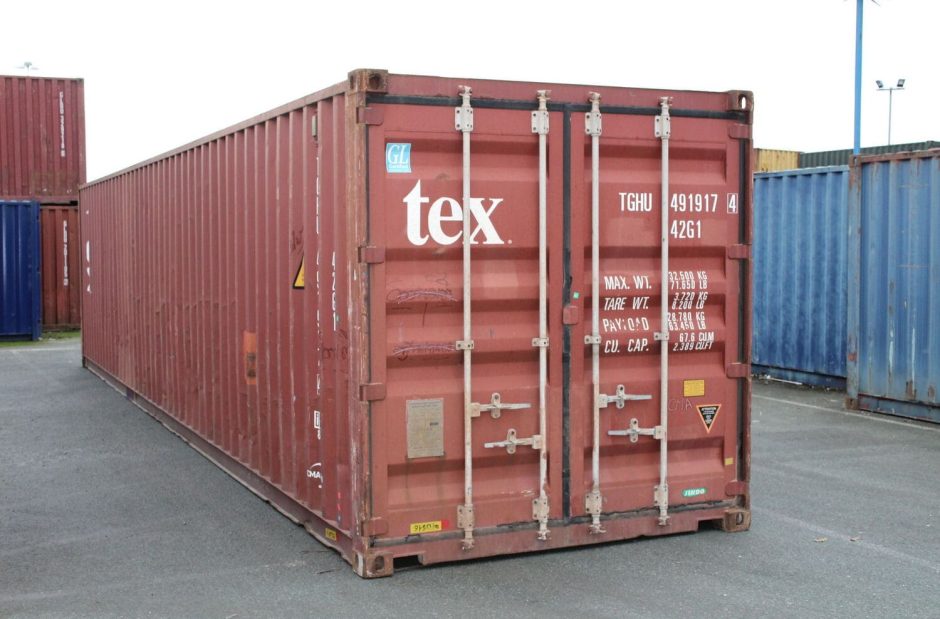Whether you’re planning a local delivery or shipping cargo across the world, knowing the exact dimensions of a 40ft container can help you avoid costly mistakes. From warehouse logistics to customs paperwork, every centimeter counts.
In this article, we’ll break down everything you need to know about 40ft container dimensions, capacity, and real-world use cases—along with expert tips for loading and planning.
📏 What Are the Standard 40ft Container Dimensions?
A 40-foot container is one of the most common shipping units used globally. Here are the external and internal dimensions of a standard 40ft dry container:
External Dimensions (approx.)
- Length: 40 ft (12.19 m)
- Width: 8 ft (2.44 m)
- Height: 8 ft 6 in (2.59 m)
Internal Dimensions (approx.)
- Length: 39 ft 6 in (12.03 m)
- Width: 7 ft 8 in (2.35 m)
- Height: 7 ft 10 in (2.39 m)
Door Opening
- Width: 7 ft 8 in (2.34 m)
- Height: 7 ft 5 in (2.28 m)
📦 What’s the Capacity of a 40ft Container?
| Metric | Value |
|---|---|
| Internal Volume | ~67.6 cubic meters (~2,389 ft³) |
| Max Gross Weight | 30,480 kg (67,200 lbs) |
| Tare Weight | 3,700–4,000 kg (8,160–8,820 lbs) |
| Max Payload | ~26,500 kg (58,420 lbs) |
These values may vary slightly depending on the manufacturer or shipping line.
🔍 High Cube vs Standard 40ft Containers
A 40ft High Cube (HC) container is one foot taller than the standard version, offering more headroom and volume.
| Container Type | Height | Volume (approx.) |
| Standard | 8 ft 6 in | ~67.6 m³ (2,389 ft³) |
| High Cube | 9 ft 6 in | ~76.3 m³ (2,694 ft³) |
When to choose High Cube:
- Shipping lightweight but bulky goods
- Need vertical clearance for machinery
- For easier double-stacking of pallets
🧱 What Can You Fit in a 40ft Container?
Here are examples of what fits in a 40ft container:
- Standard pallets (48″x40″): 20–22 (single stack), 40 (double stack)
- Furniture for a 3–4 bedroom house
- One or two vehicles (compact or mid-size)
- Over 300 bicycles or 60 washing machines
It’s ideal for:
- Exporters/importers with full container loads (FCL)
- E-commerce warehouses shipping to fulfillment centers
- Construction equipment and supplies
📦 40ft Container Uses in Logistics
- Intermodal freight: Used in sea, rail, and truck transport
- Cross-docking: Efficient for transferring goods between modes
- Long-term storage: Converted into modular storage units
- Mobile offices or workshops: Popular for temporary use
⚠️ Things to Keep in Mind When Planning
- Max weight limits vary by country and transport mode
- Load distribution is crucial to avoid tilting and damage
- Stack height limits if using racking systems
- Container floor type (wood vs steel) affects loading method
🛠️ Tips for Efficient Container Loading
- Use load plans or 3D layout tools
- Pack by weight and height for stability
- Secure with straps, blocking and bracing
- Avoid empty voids to prevent shifting
- Balance weight between front and rear
📐 40ft Container Spec Sheet (Quick Reference)
| Spec | Standard 40ft | High Cube 40ft |
| Internal Length | 12.03 m | 12.03 m |
| Internal Width | 2.35 m | 2.35 m |
| Internal Height | 2.39 m | 2.69 m |
| Volume | ~67.6 m³ | ~76.3 m³ |
| Max Gross Weight | 30,480 kg | 30,480 kg |
| Tare Weight | ~3,800 kg | ~4,200 kg |
| Max Payload | ~26,500 kg | ~26,280 kg |
💬 FAQ: 40ft Container Dimensions & Capacity
While most 40ft containers adhere to ISO standard dimensions to ensure compatibility across shipping and handling systems globally, small differences can exist between manufacturers. These variations might include slight changes in interior height or door opening dimensions, which can matter when loading oversized or tightly packed cargo. Always check the specification sheet provided by your carrier or container supplier before planning a shipment.
Yes, a 40ft container is commonly used for moving large households. It typically fits the contents of a 3 to 4-bedroom home, including furniture, appliances, and personal items. However, efficient packing is key. For international moves, a 40ft High Cube container may offer better space for bulky items while staying within weight limits.
A standard 40ft container offers approximately 67.6 cubic meters (CBM) of internal volume, while a 40ft High Cube container provides around 76.3 CBM due to the additional height. This volume represents the total space inside, but actual usable volume may be less depending on how efficiently the items are packed.
Absolutely. A 40ft container can comfortably accommodate one large SUV or two compact to mid-size cars placed end-to-end. Proper securing and bracing are required to avoid movement during transport. Many auto exporters use 40ft containers for this purpose, sometimes even combining a car with additional personal goods if space allows.
🧡 Final Thoughts: Why 40ft Container Dimensions Matter
Knowing your container’s dimensions isn’t just a technical detail—it’s a competitive advantage. Whether you’re optimizing for cost, maximizing space, or avoiding shipping issues, understanding 40ft container dimensions puts you one step ahead.
If you’re unsure how to plan your shipment or want expert help with container loading, our team is here to assist.
Planning to load a container or working out your logistics plan? 🚢
If you’re focused on efficient cargo organization, don’t miss our guide:
- How Many Pallets Fit in a 40ft Container? — a practical guide to maximize capacity, avoid overloading, and plan efficient freight.
And if you’re looking for a reliable drayage provider, be sure to check out our Drayage Directory with listings across major Canadian cities.
